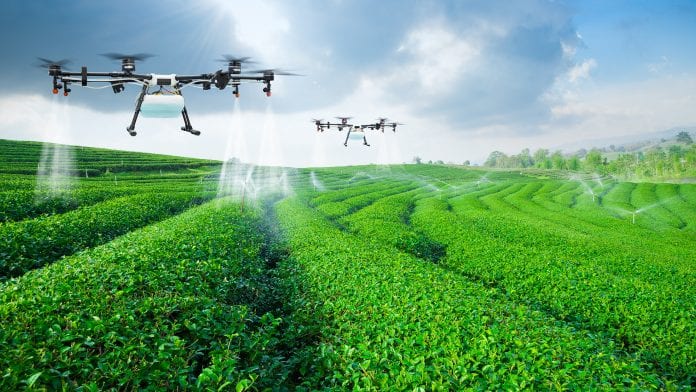One of the ways technology is impacting the agriculture system is the application of robots in the farming processes.
Today, robots are helping farmers to do soil analysis, plant seeds, control weeds, supply nutrients, fertilizers, and water to plants, monitor the farm, harvest foods, and a host of others.
This is the reason experts have opined that today’s food and agriculture industry has been revolutionized by the use of robotics and automation processes.
There are many applications of robotics and different areas of farming where robots are used.
Today, the application of automation in agriculture is growing daily and according to research, the market for agric robots and drones will be over $40 billion in a couple of years, that’s too huge to neglect.
It requires time, effort, and manpower to carry out most of the activities involved in commercial farming, therefore, the use of advanced sensors and robotics and the implementation of automated farming is employed.
Let’s now discuss how robots help to farm and the task they perform.
Nursery Planting
A nursery can be a field where seeds will be grown and nurtured in a container to become a young plant. These young plants will now be transported to the main site where they will grow into a large plant or be sold to farmers.
Robotics are now in use to automate the nursing of these seeds. There are now automation solutions for potting, seeding, and even warehousing the living plants in the greenhouse.
For example, it’s the robots that will convey the pots into the greenhouse, space them as they grow, water them and consolidate the pots when the young plants are transported to the main field.
Crop Seeding
For some seeds which are planted directly on the farm, commercial farmers normally attach their seed broadcast spreader to the tractor while moving this tool on the farm to plant the seeds, however, this method wastes a lot of seeds in and around the field.
However, this and many other challenges in planting seeds on a large scale can be overcome with automation precision seeding which combines mapping and robotics.
The robot will make use of a map to read the soil properties in every area of the field. The seeding robot will be attached to the tractor to help place the seeds at the right locations, and in the proper depth.
This will reduce the number of quality seeds that are being wasted as well as seeds that are not properly planted in the soil.
Crop Monitoring and Analysis
It is not an easy task to manage a large farm. You will need much labor and the cost of this can be high and sweep away your potential profits. the monitoring can also be ineffective sometimes.
For example, checking young plants on a large field to know if their roots are well fitted into the soil, assessing nutrient deficiency, and some other data needed to improve yield and productivity.
But with the help of geomapping and new sensor technologies, farmers are getting very high-level data about the crops.
There are drones and ground robots that will take soil samples, monitor the water level and nutrient level of the plants, give reports on pests and infections, etc and all these data are collected autonomously.
The robotics performing these functions are now sold to farmers and they can now monitor their farms from the comfort of their homes.
They just need an engineer to install the hardware and download the software that connects with the robot on their smartphone.
They can now get live data of their farm on the app installed on their mobile phone. Some of these robots can even help in weed control by identifying weeds and applying chemicals to it and even fertilizing plants that are deficient in the essential nutrients for growth.
Irrigation
Even though water is recyclable and reusable, water conservation is now more important than ever before. In the old system of farming, the application of fertilizers and irrigating the farms both use a lot of water.
Because of this, there’s more cost of getting water available for farming and water could be one of the major constraints in growing some foods in some areas
There is a new method that’s being used now in precision farming which is called Robot-Assisted Irrigation.
This is a modern method of irrigating the farm whereby robots will be employed in the irrigation system and water will be made available to the roots of the plants only.
The amount of water that will be showered to each plant is already regulated and there will be no waste of water in this method. Each plant will get the needed water for growth and this will be applied to all the plants on the field.
There are agricultural robots that will autonomously navigate in between the plants and provide the plants with water directly at the right place. The robots are capable of accessing the areas where some other machines can not navigate.
Conclusion
Precision farming seems to be the way to meet the huge demands of food in this century. Using robots to carry out those hectic, time-consuming agricultural practices will help in reducing the cost of food production, improve yields and increase productivity.








